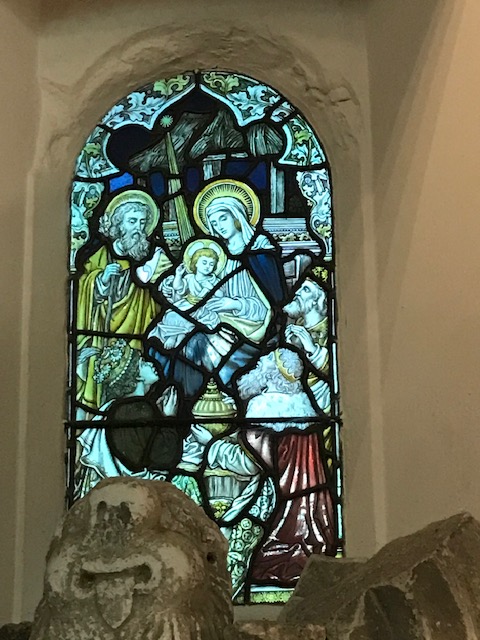A few yards from the west door of the church of St. Mary the Virgin, Merton Park, is a rather fine stone gateway. It now stands in the wall of the churchyard, but for centuries it did service about a mile to the east, at Merton Priory. Its zig-zag carving, classically Norman, is still sharp and clear; Pevsner describes it lovingly as “sumptuous”. Merton Priory is long gone, demolished in the sixteenth century, its old site now occupied by a retail park and residential streets. But somehow the Norman gateway survived, and when it was discovered in 1914 a new home for it was found at St. Mary’s church.
The Domesday Book recorded the existence of an Anglo-Saxon church here in 1086. No physical trace of it survives; it was replaced by a new Norman church early in the twelfth century. According to some sources, the prime mover in this was Gilbert, an influential local figure who was also the driving force behind the establishment of Merton Priory. From this point on, as the Priory grew in size and wealth, it and the church were closely connected.
In its first phase, the new St. Mary’s was a sizeable but simple two-cell stone structure of nave and chancel; to this day the footprint of the nave is the same, although its original Norman character has been obscured by later alterations. The most significant of these was the addition of north and south aisles in the nineteenth century, which saw the old nave walls replaced by arcades of pointed arches, thus giving the whole church a spuriously Gothic rather than Norman feel.
But there are some recognisably Norman surviving features: a north door, its zig-zag pattern sadly damaged during the nineteenth century alterations; and a round-arched window (now containing nineteenth-century stained glass) just inside the west door.
In the thirteenth century as style shifted from Norman Romanesque to Early English Gothic, the east end of the church was extended. An ambitious new chancel was built, surprisingly long, four substantial bays defined by pointed blank arches
and pierced by lancet windows.
Around 1400 the chancel acquired an impressive hammerbeam roof.
Like the extended chancel itself, this roof would have been an expensive project, carried out by highly skilled craftsmen, made possible by the church’s association with the prosperous Priory nearby.
To sum up: there was an Anglo-Saxon church on this site, but the St. Mary’s that we encounter today belongs to a different world, steeped in the culture and wealth of post-Conquest medievalism and Christendom.
SOURCES:
Bridget Cherry & Nikolaus Pevsner, The Buildings of England: London 2: South, Penguin Books, London, 1994, pp. 437-8.
A History of the County of Surrey: Volume 4, Victoria County History, London, 1912, pp. 64-68.





